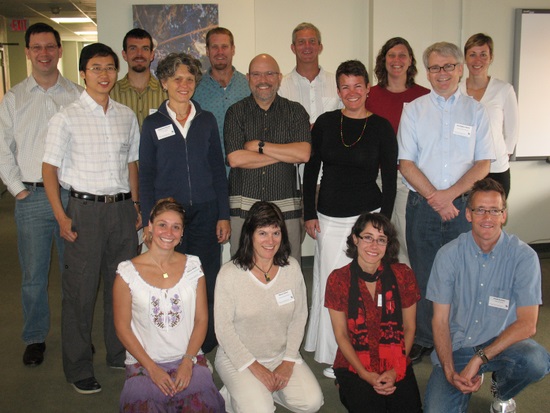NCEAS Working Groups
Ecology of environmental justice in metropolitan areas
Project Description
Trees in the city provide a number of benefits that we take for granted as free services. Trees create shade, lessen climate extremes, reduce heating and cooling costs, reduce deaths and injuries from heat stress, provide habitat for wildlife, absorb pollutants, save costs for stormwater and wastewater treatment, and increase real estate values. Recently, a number of municipalities have decided to make their cities greener with new and ambitious tree planting programs.
This project will measure ecosystem services, the benefits that ecosystems provide to people, in five metropolitan areas: Baltimore, Miami, Phoenix, Los Angeles, and Sacramento. These cities occupy different climate and vegetation zones, plus have different histories, population characteristics, and economies. We expect these differences will affect the amount and types of ecosystem services that are gained from trees in each of the metropolitan areas. We will measure ecosystem services in two ways, by calculating:
1.) the physical benefits from trees, such as tons of pollutants absorbed; and
2.) the monetary value of the benefits from trees, or what it would cost, for instance, to absorb pollutants using technology instead of relying on trees to perform the same function.
Calculating ecosystem services will allow us to answer the central question of this research: who benefits most and least from ecosystem services from trees? Theory from environmental justice suggests that low-income and ethnic/racial minority populations will live in neighborhoods with the fewest environmental amenities while white and wealthy groups will live in neighborhoods with the greatest share of environmental benefits. However, the relationship between the social characteristics of neighborhoods and ecosystem services has not been tested before. We will also explore how biophysical, political, social, and economic characteristics of each city might explain differences in the amount, types, and distribution of ecosystem services found at each location. This research offers an opportunity to link ecology and environmental justice research and to suggest best ways for municipal governments and non-profit groups to reduce inequitable distributions of ecosystem services in cities.

Principal Investigator(s)
Christopher G. Boone, Mary L. Cadenasso, J. Morgan Grove, Steward T. Pickett
Project Dates
Start: June 1, 2010
End: December 16, 2011
completed
Participants
- Christopher G. Boone
- Arizona State University
- Geoff Buckley
- Ohio University
- Mary L. Cadenasso
- University of California, Davis
- Daniel L. Childers
- Arizona State University
- Kirstin Dow
- University of South Carolina
- Michail Fragkias
- Arizona State University
- Nancy B. Grimm
- Arizona State University
- J. Morgan Grove
- USDA Forest Service
- Joseph P. McFadden
- University of California, Santa Barbara
- Melissa R. McHale
- North Carolina State University
- Laura Ogden
- Florida International University
- Jarlath O'Neil-Dunne
- University of Vermont
- Diane Pataki
- University of California, Irvine
- Steward T. Pickett
- Cary Institute of Ecosystem Studies
- Stephanie Pincetl
- University of California, Los Angeles
- Kirsten Schwarz
- University of California, Davis
- Julie Sze
- University of California, Davis
- Ali Whitmer
- Georgetown University
- Weiqi Zhou
- University of California, Davis
Products
-
Journal Article / 2010
Environmental justice, sustainability and vulnerability
-
Book Chapter / 2012
Connecting environmental justice, sustainability, and vulnerability
-
Book / 2012
Urbanization and Sustainability: Linking Ecology, Environmental Justice, and Global Environmental Change
-
Journal Article / 2012
Urban sustainability and ecology of environmental justice
-
Presentations / 2011
Ecosystem services in urban landscapes: Who benefits?
-
Book Chapter / 2012
Towards a new framework for urbanization and sustainability
-
Book Chapter / 2012
Ecology and environmental justice: Understanding disturbance using ecological theory
-
Presentations / 2012
Urban tree canopy cover and environmental justice: Linking science practice and data through a comparison of Baltimore Philadelphia Sacramento and Washington DC
-
Journal Article / 2015
Trees grow on money: Urban tree canopy cover and environmental justice
